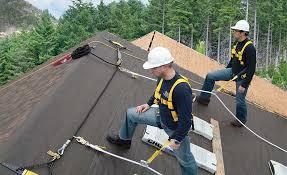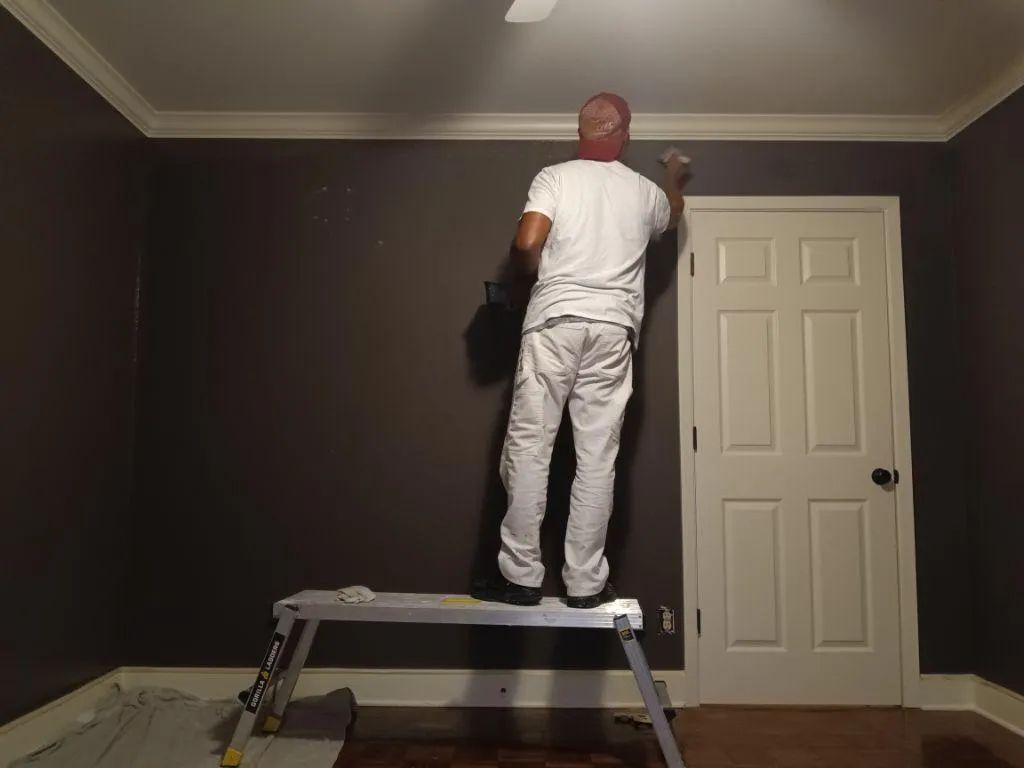Blog > Article Library
Twain Services Articles

Deciphering the Timeline: How Often Should You Replace Your Roof in Texas?
A roof is a critical component of any home, providing protection against the elements and ensuring the safety and comfort of its occupants. However, over time, roofs are subject to wear and tear from exposure to harsh weather conditions, leading to deterioration and the need for replacement. In Texas, where the climate can be unforgiving, understanding the ideal timeline for roof replacement is essential for homeowners. In this article, we'll delve into the factors influencing the frequency of roof replacement in Texas and provide insights into when it's time to consider installing a new roof.
Factors Influencing Roof Replacement Frequency
1. Type of Roofing Material
The lifespan of a roof is heavily influenced by the type of roofing material used. Common roofing materials such as asphalt shingles, wood shakes, and clay tiles typically have a lifespan of 15 to 20 years. In contrast, more durable materials like metal roofing can last 50 years or more. Understanding the characteristics and longevity of different roofing materials is crucial for determining when replacement is necessary.
2. Climate and Weather Conditions
Texas is known for its diverse climate, ranging from scorching summers to occasional severe storms and hail. Exposure to extreme heat, UV radiation, high winds, and heavy rainfall can accelerate the deterioration of roofing materials, leading to premature aging and the need for replacement. Homes located in regions prone to severe weather may require more frequent roof inspections and maintenance to ensure optimal performance and longevity.
3. Maintenance and Care
Regular maintenance and care are essential for prolonging the lifespan of a roof. Routine inspections, gutter cleaning, and prompt repairs of any damage or leaks can prevent minor issues from escalating into costly repairs or premature replacement. Neglecting maintenance can shorten the lifespan of your roof and compromise its performance over time.
Ideal Replacement Timeline for Common Roofing Materials
1. Asphalt Shingles: 15 to 20 Years
Asphalt shingles are one of the most common roofing materials used in residential construction. While they are relatively affordable and easy to install, asphalt shingles typically have a lifespan of 15 to 20 years. Factors such as quality of installation, climate, and maintenance practices can influence the longevity of asphalt shingle roofs.
2. Wood Shakes: 20 to 30 Years
Wood shakes offer a rustic and natural aesthetic appeal to homes but require regular maintenance to prevent rot, mold, and insect infestations. With proper care, wood shake roofs can last 20 to 30 years. However, in Texas' humid climate, wood shakes may be more susceptible to decay and may require replacement sooner.
3. Clay Tiles: 50 to 100+ Years
Clay tiles are renowned for their durability, longevity, and timeless beauty. With proper installation and maintenance, clay tile roofs can last 50 to 100 years or more. While clay tiles are more expensive than asphalt shingles, their longevity and aesthetic appeal make them a popular choice for homeowners seeking a long-term roofing solution.
4. Metal Roofing: 50+ Years
Metal roofing stands out for its exceptional durability, resilience, and longevity. Metal roofs can withstand extreme weather conditions, including high winds, hail, and heavy rainfall, making them ideal for Texas' challenging climate. With proper installation and maintenance, metal roofs can last 50 years or more, providing homeowners with long-term protection and peace of mind.
Signs It's Time for Roof Replacement
1. Age of the Roof
If your roof is approaching or has exceeded its expected lifespan based on the type of roofing material used, it may be time to consider replacement. Signs of wear and deterioration, such as curling shingles, granule loss, and sagging, indicate that the roof has reached the end of its serviceable life.
2. Visible Damage and Leaks
Visible signs of damage, such as cracked or missing shingles, water stains on ceilings or walls, and leaks in the attic, indicate that the roof is compromised and in need of replacement. Ignoring these warning signs can lead to water damage, mold growth, and structural issues.
3. Increased Energy Bills
A deteriorating roof can compromise the energy efficiency of your home, leading to higher heating and cooling costs. If you notice a significant increase in your energy bills, it may be due to heat loss or heat gain through an aging or damaged roof. Replacing the roof with a more energy-efficient material can help reduce energy consumption and lower utility costs.
Conclusion
In conclusion, the frequency of roof replacement in Texas depends on various factors, including the type of roofing material used, climate, maintenance practices, and signs of wear and damage. While common roofing materials like asphalt shingles may need replacement every 15 to 20 years, more durable materials like metal roofing can last 50 years or more. Regular inspections, maintenance, and prompt repairs are essential for prolonging the lifespan of your roof and ensuring the safety and integrity of your home. By understanding the ideal replacement timeline for your roof and staying vigilant for signs of wear and damage, homeowners can make informed decisions to protect their investment and maintain the long-term value of their homes.
Older Articles


Contact Us
Service Hours
Social Media
Blog > Article Library


Deciphering the Timeline: How Often Should You Replace Your Roof in Texas?
A roof is a critical component of any home, providing protection against the elements and ensuring the safety and comfort of its occupants. However, over time, roofs are subject to wear and tear from exposure to harsh weather conditions, leading to deterioration and the need for replacement. In Texas, where the climate can be unforgiving, understanding the ideal timeline for roof replacement is essential for homeowners. In this article, we'll delve into the factors influencing the frequency of roof replacement in Texas and provide insights into when it's time to consider installing a new roof.
Factors Influencing Roof Replacement Frequency
1. Type of Roofing Material
The lifespan of a roof is heavily influenced by the type of roofing material used. Common roofing materials such as asphalt shingles, wood shakes, and clay tiles typically have a lifespan of 15 to 20 years. In contrast, more durable materials like metal roofing can last 50 years or more. Understanding the characteristics and longevity of different roofing materials is crucial for determining when replacement is necessary.
2. Climate and Weather Conditions
Texas is known for its diverse climate, ranging from scorching summers to occasional severe storms and hail. Exposure to extreme heat, UV radiation, high winds, and heavy rainfall can accelerate the deterioration of roofing materials, leading to premature aging and the need for replacement. Homes located in regions prone to severe weather may require more frequent roof inspections and maintenance to ensure optimal performance and longevity.
3. Maintenance and Care
Regular maintenance and care are essential for prolonging the lifespan of a roof. Routine inspections, gutter cleaning, and prompt repairs of any damage or leaks can prevent minor issues from escalating into costly repairs or premature replacement. Neglecting maintenance can shorten the lifespan of your roof and compromise its performance over time.
Ideal Replacement Timeline for Common Roofing Materials
1. Asphalt Shingles: 15 to 20 Years
Asphalt shingles are one of the most common roofing materials used in residential construction. While they are relatively affordable and easy to install, asphalt shingles typically have a lifespan of 15 to 20 years. Factors such as quality of installation, climate, and maintenance practices can influence the longevity of asphalt shingle roofs.
2. Wood Shakes: 20 to 30 Years
Wood shakes offer a rustic and natural aesthetic appeal to homes but require regular maintenance to prevent rot, mold, and insect infestations. With proper care, wood shake roofs can last 20 to 30 years. However, in Texas' humid climate, wood shakes may be more susceptible to decay and may require replacement sooner.
3. Clay Tiles: 50 to 100+ Years
Clay tiles are renowned for their durability, longevity, and timeless beauty. With proper installation and maintenance, clay tile roofs can last 50 to 100 years or more. While clay tiles are more expensive than asphalt shingles, their longevity and aesthetic appeal make them a popular choice for homeowners seeking a long-term roofing solution.
4. Metal Roofing: 50+ Years
Metal roofing stands out for its exceptional durability, resilience, and longevity. Metal roofs can withstand extreme weather conditions, including high winds, hail, and heavy rainfall, making them ideal for Texas' challenging climate. With proper installation and maintenance, metal roofs can last 50 years or more, providing homeowners with long-term protection and peace of mind.
Signs It's Time for Roof Replacement
1. Age of the Roof
If your roof is approaching or has exceeded its expected lifespan based on the type of roofing material used, it may be time to consider replacement. Signs of wear and deterioration, such as curling shingles, granule loss, and sagging, indicate that the roof has reached the end of its serviceable life.
2. Visible Damage and Leaks
Visible signs of damage, such as cracked or missing shingles, water stains on ceilings or walls, and leaks in the attic, indicate that the roof is compromised and in need of replacement. Ignoring these warning signs can lead to water damage, mold growth, and structural issues.
3. Increased Energy Bills
A deteriorating roof can compromise the energy efficiency of your home, leading to higher heating and cooling costs. If you notice a significant increase in your energy bills, it may be due to heat loss or heat gain through an aging or damaged roof. Replacing the roof with a more energy-efficient material can help reduce energy consumption and lower utility costs.
Conclusion
In conclusion, the frequency of roof replacement in Texas depends on various factors, including the type of roofing material used, climate, maintenance practices, and signs of wear and damage. While common roofing materials like asphalt shingles may need replacement every 15 to 20 years, more durable materials like metal roofing can last 50 years or more. Regular inspections, maintenance, and prompt repairs are essential for prolonging the lifespan of your roof and ensuring the safety and integrity of your home. By understanding the ideal replacement timeline for your roof and staying vigilant for signs of wear and damage, homeowners can make informed decisions to protect their investment and maintain the long-term value of their homes.
Older Articles


Contact Us
(346) 209-4009
Humble, Texas, 77346
Service Hours
Mon-Sat: 8am-6pm
Sun: Off
Social Media





